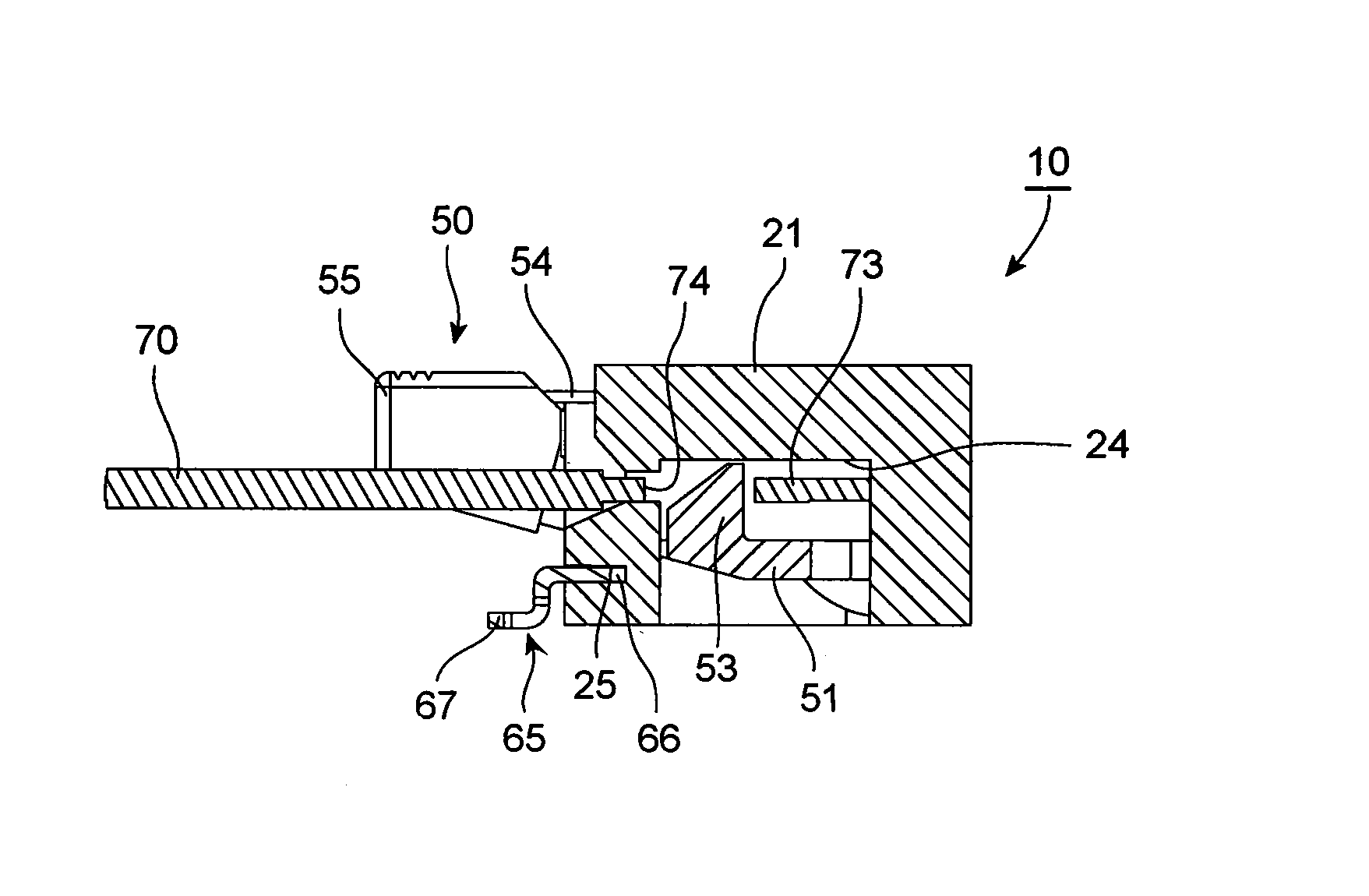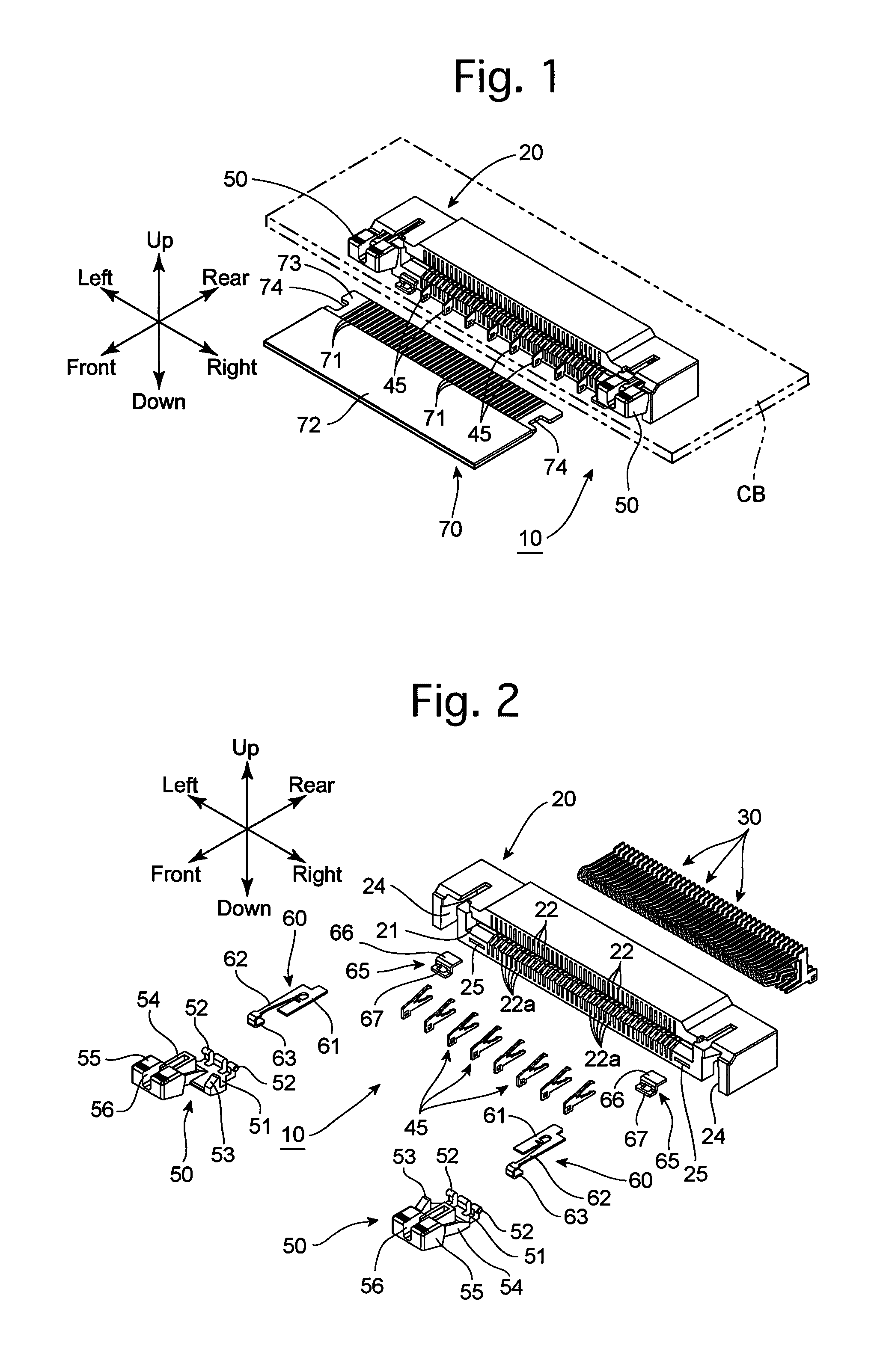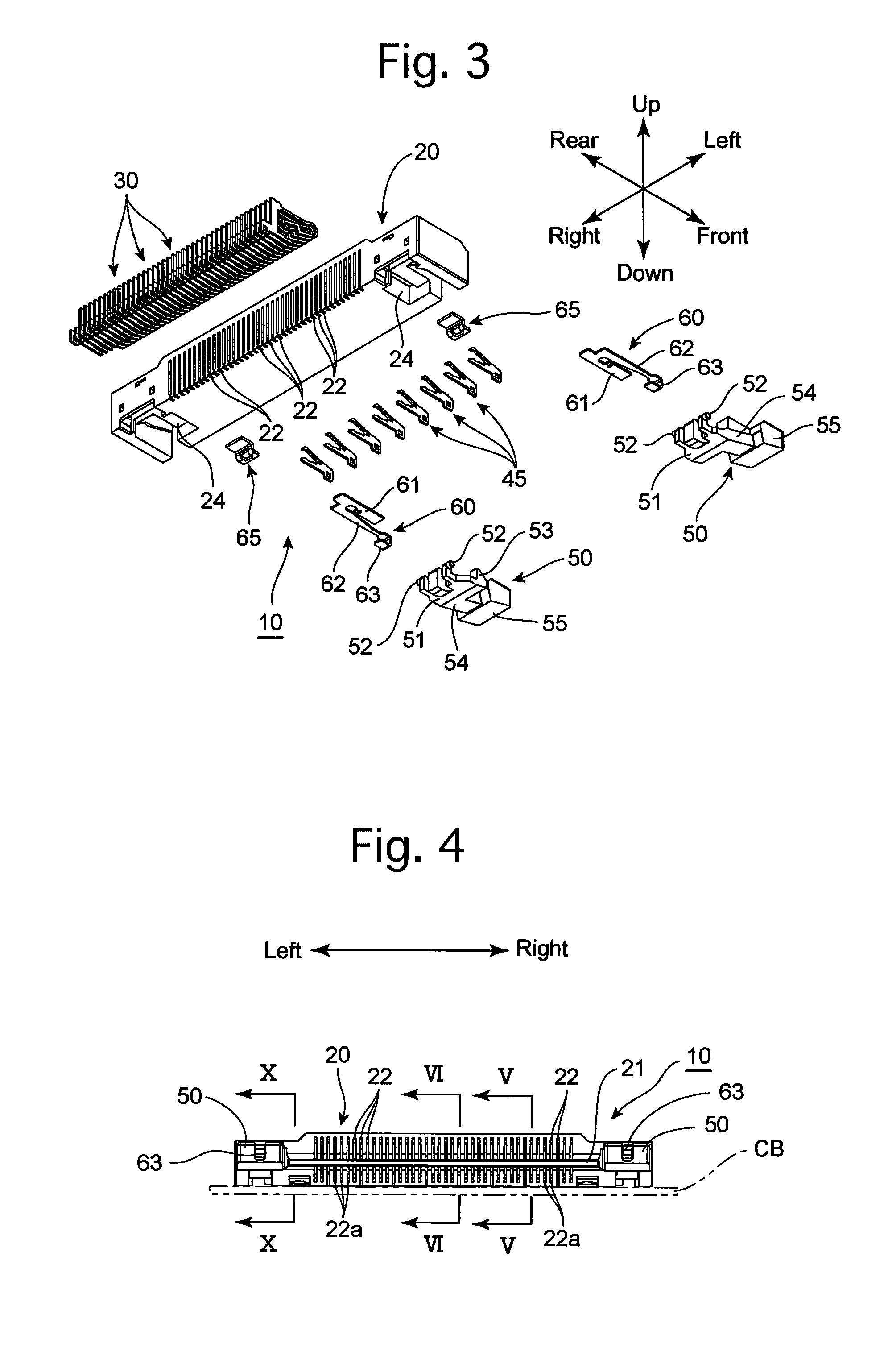Connector
a technology of connecting parts and connectors, applied in the direction of coupling contact members, coupling device connections, two-part coupling devices, etc., can solve the problems of contact failure between the connecting object and the contacts of the connector, the displacement of the first contact protrusion, and the inability to achieve a stable contact state (stable spring), so as to improve the reliability of contact and avoid poor electrical contact.
- Summary
- Abstract
- Description
- Claims
- Application Information
AI Technical Summary
Benefits of technology
Problems solved by technology
Method used
Image
Examples
Embodiment Construction
[0041]An embodiment of a connector according to the present invention will be hereinafter discussed with reference to FIGS. 1 through 13. In the following descriptions, forward and rearward directions, leftward and rightward directions, and upward and downward directions of the connector 10 are determined with reference to the directions of the double-headed arrows shown in the drawings.
[0042]The connector 10 is applicable to, e.g., a car navigation system which is installed in or on an instrument panel provided on the front of a vehicle interior, or a multifunctional printer in which a copier and a facsimile are incorporated. The connector 10 is provided with an insulator 20, forty signal contacts 30, eight ground contacts 45, two lock members 50, two lock biasing springs 60 and two fixing brackets 65, which constitute major elements of the connector 10.
[0043]The insulator 20 is formed from electrical-insulative and heat-resistant synthetic resin by injection molding. The insulator...
PUM
 Login to View More
Login to View More Abstract
Description
Claims
Application Information
 Login to View More
Login to View More - R&D
- Intellectual Property
- Life Sciences
- Materials
- Tech Scout
- Unparalleled Data Quality
- Higher Quality Content
- 60% Fewer Hallucinations
Browse by: Latest US Patents, China's latest patents, Technical Efficacy Thesaurus, Application Domain, Technology Topic, Popular Technical Reports.
© 2025 PatSnap. All rights reserved.Legal|Privacy policy|Modern Slavery Act Transparency Statement|Sitemap|About US| Contact US: help@patsnap.com



